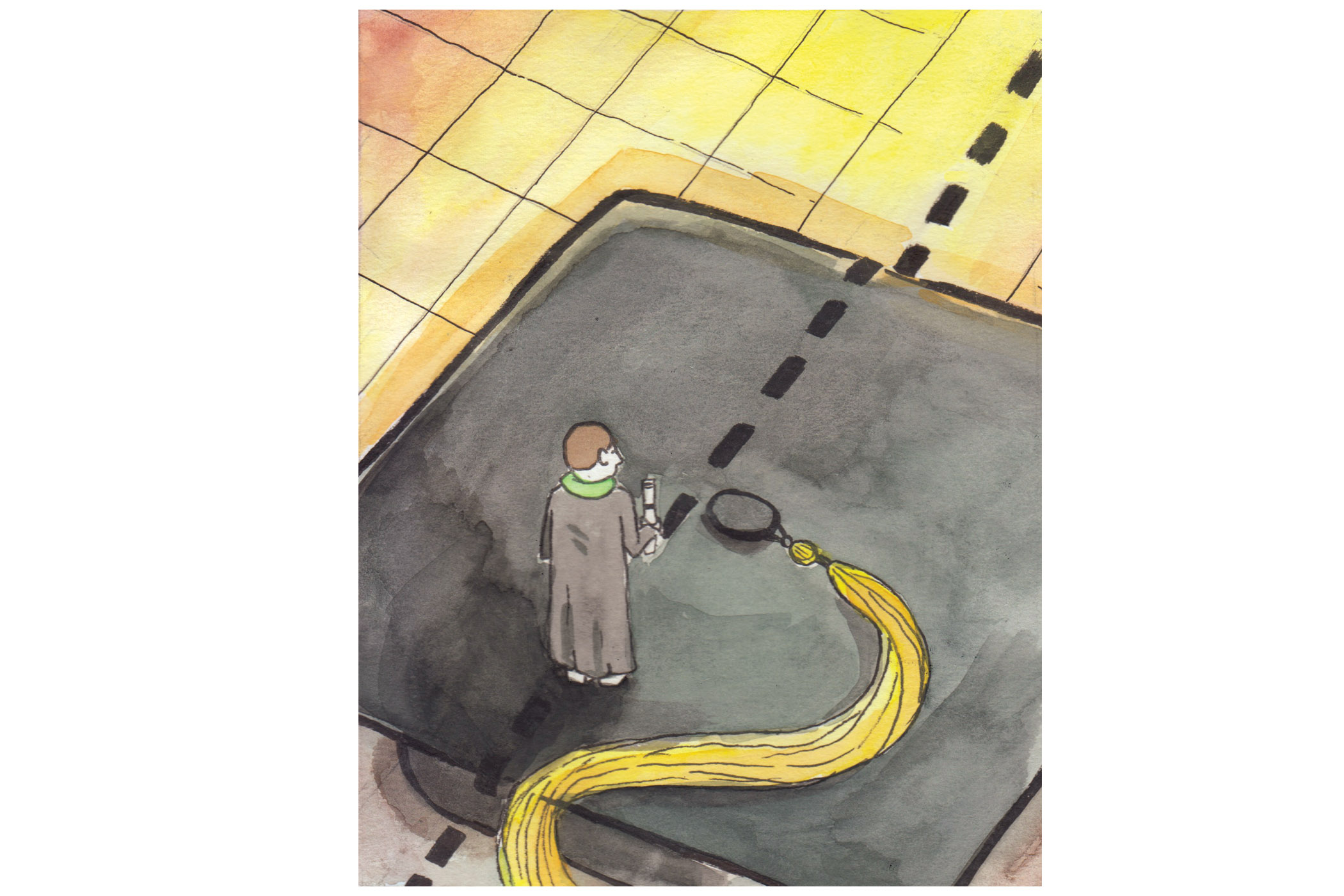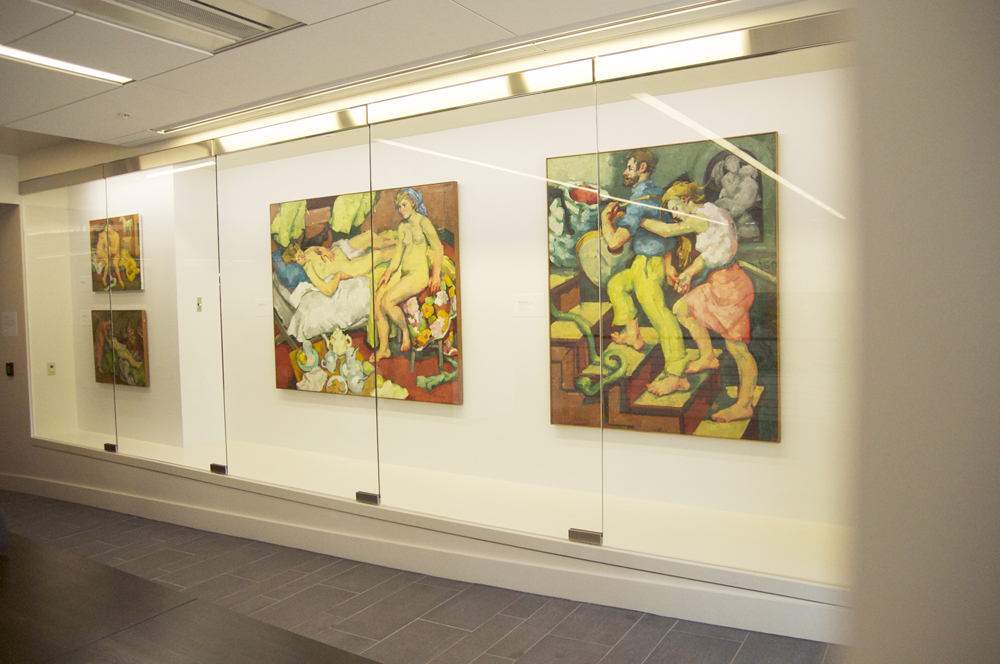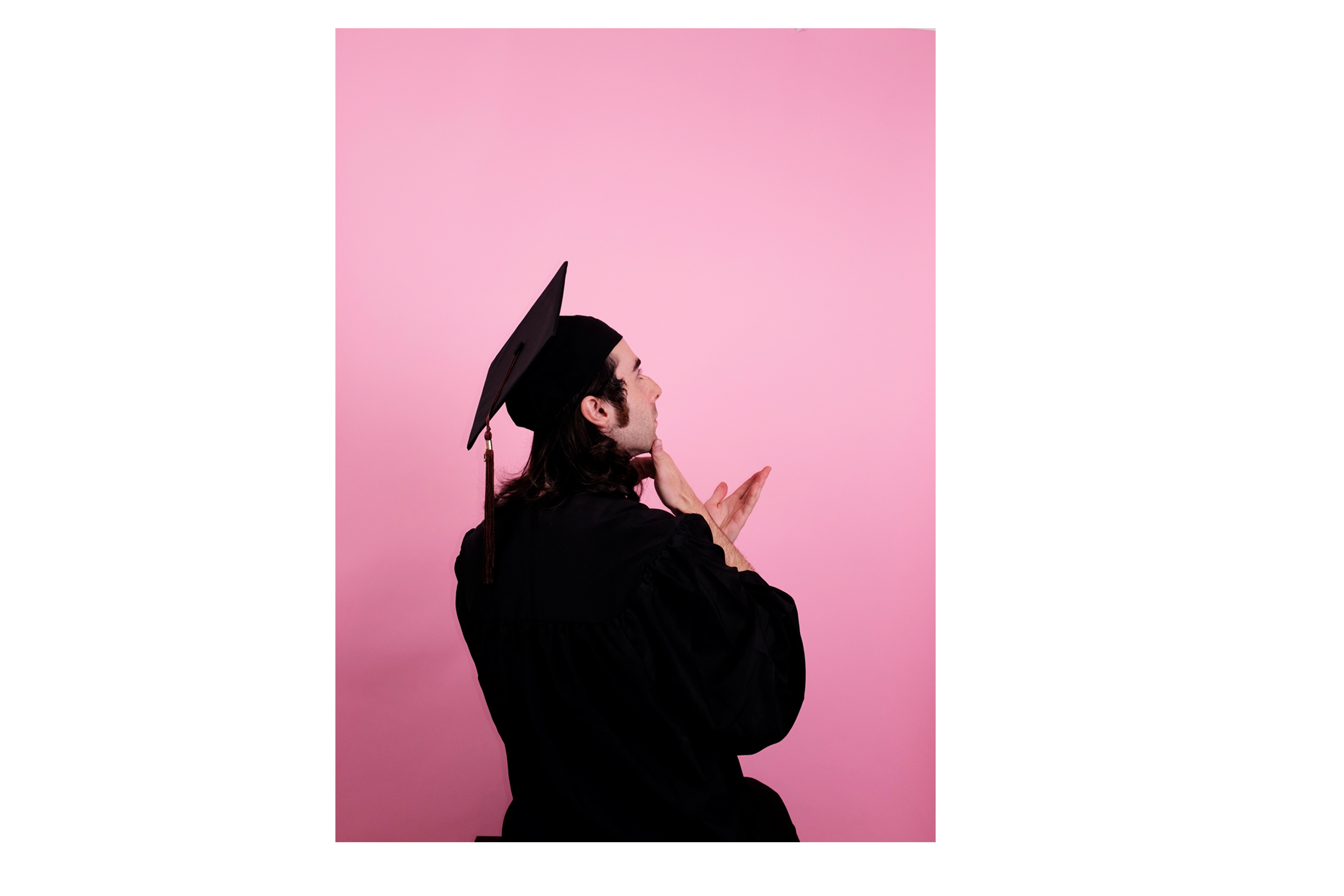What is it about a cotton candy sunset that evokes an indefinable sense of awe in individuals far and wide? How does a waterfall have the uncanny ability to take our breath away? What qualifies nature as beautiful? These are the questions that run rampant in artist Nicole Pietrantoni’s mind, leading her to examine why we, as humans, view particular landscapes through distinct lenses. In her hour-long presentation in Lincoln Hall on March 7, Pietrantoni showed her craft to Portland State students and opened up their minds to these long-pondered questions.
Born and raised in the Chicago suburbs, Pietrantoni grew up in a family that encouraged her creativity. “My dad was a police officer and my mom was a high school art teacher,” Pietrantoni said. “My mom was very encouraging of making things, and it’s only now that I talk to other people about their childhoods that I kind of understand that mine was very creative and I was encouraged to create things or make things, so I think that did have a big influence on the fact that I’m an artist now.”
With the support of her parents and the natural drive to create, Pietrantoni was able to attain a B.S. in Human and Organizational Development and Art History from Vanderbilt University, later completing her MFA and M.A. in Printmaking from the University of Iowa. “I went into arts administration before I actually went back and got my MFA and pursued art for a career,” Pietrantoni said. “So I kind of took a roundabout way to actually get to making art my life.”
Since finishing graduate school, Pietrantoni has gone on to receive numerous awards and residencies, including a Leifu Eiríksson Foundation Grant, an Artist Trust Fellowship, the Manifest Prize, and the Graves Award for excellence in humanities teaching and research.
After having her work displayed in over 80 art exhibitions around the world, she’s moved on to become an assistant professor of art at Whitman College, where she teaches printmaking and book arts. Pietrantoni is also president of SGC International, “North America’s largest professional organization dedicated to education and scholarship in the field of printmaking.”
When asked how she juggles her many projects and professions, Pietrantoni laughed. “From the outside, it also really looks like, ‘You’re one of those people who does everything and does it seamlessly, or perfectly!’” she said. “But I can tell you, it’s not seamless and it’s not perfect! It takes a lot of saying no to some things and trying to do my best at the things I am getting into, so it’s a little crazy!”
One of the most impactful honors Pietrantoni has received is her Fulbright Scholarship to work in the stunning country of Iceland, where she started questioning the relationship between human beings and nature and how our perception of nature changes from landscape to landscape. “I was surrounded by so much beauty, or what we’re sort of trained or disciplined to think of as beautiful, and all I could do was just stand in front of it—all these vistas and waterfalls and rainbows and glaciers—and just take pictures; I took tons and tons of pictures,” Pietrantoni said. “I just didn’t know what else to do, and it took me a while to figure out how to make art about that experience.”
Much of Pietrantoni’s work is based on her experiences in Iceland: Her postcard series is comprised of popular sights in Iceland paired with simple phrases or one-liners. “It was one of the first projects I did there in Iceland to engage with that tourist experience,” Pietrantoni said. “So I took what was a simple souvenir and created my own version of these picturesque postcards, sort of snapshots that I had taken of the landscape with some text imposed over it.”
Another piece influenced by the beauty standards we set for nature is her Implications, which consists of a glacier image printed on Kozo paper and then hand bound to create 30 accordion books. When folded up into book form, the icy image disappears, revealing text extracted from real climate change documents. “The pieces are simultaneously these beautiful images, but then they close up and they’re these books about something sort of darker, a more ominous side of these landscapes, which are sort of vanishing or disappearing, and that sort of adds a complexity to the way we look at or think about that,” Pietrantoni said.
On the subject of climate change, Pietrantoni feels that it’s her duty not only as an artist and teacher, but also just as a human being, to speak up about the matter. “I do have a responsibility, absolutely, to think about how I make images, why I make them and to what end,” Pietrantoni said. “What are they for? What are they doing in the world?” She hopes that those who view her art and come to her lectures will realize that it’s important to not only work toward saving attractive landscapes but also everyday nature: “I think in general for humans, if we can’t see nature everywhere—if we can’t see it in the weed in the sidewalk—it’s too easy for us to not protect that or to not value even the patch of grass in front of our house.”
Pietrantoni said she hopes students will take with them “a renewed appreciation for how we look at landscape,” and focus on “art ecology and our place in the natural world.” So admire that dirty old brick building towering over the streets of Portland. Take a photo of a small patch of grass surrounded by concrete. Search for beauty in the cracks on the sidewalk because nature is everywhere, and it’s dying to be noticed.






